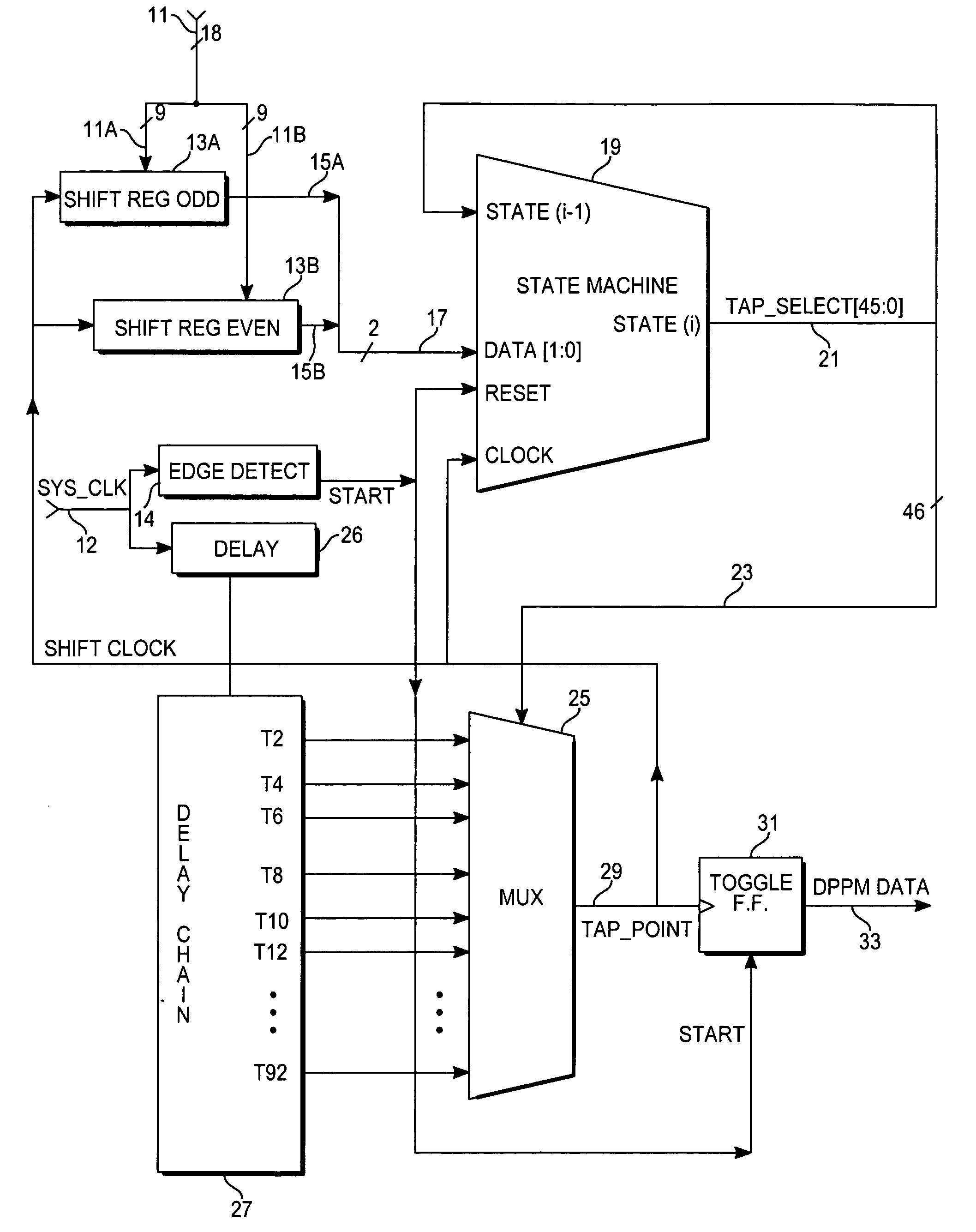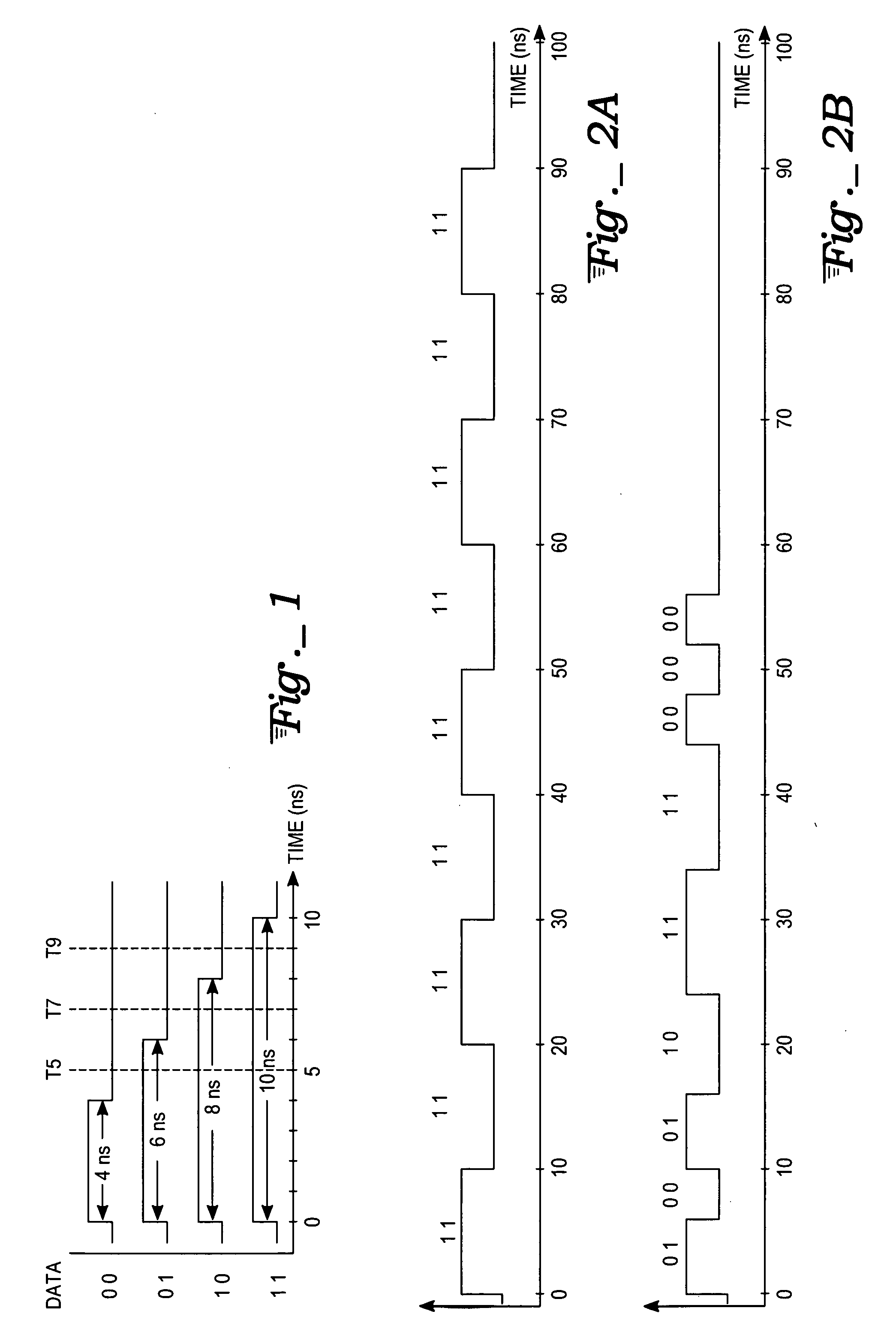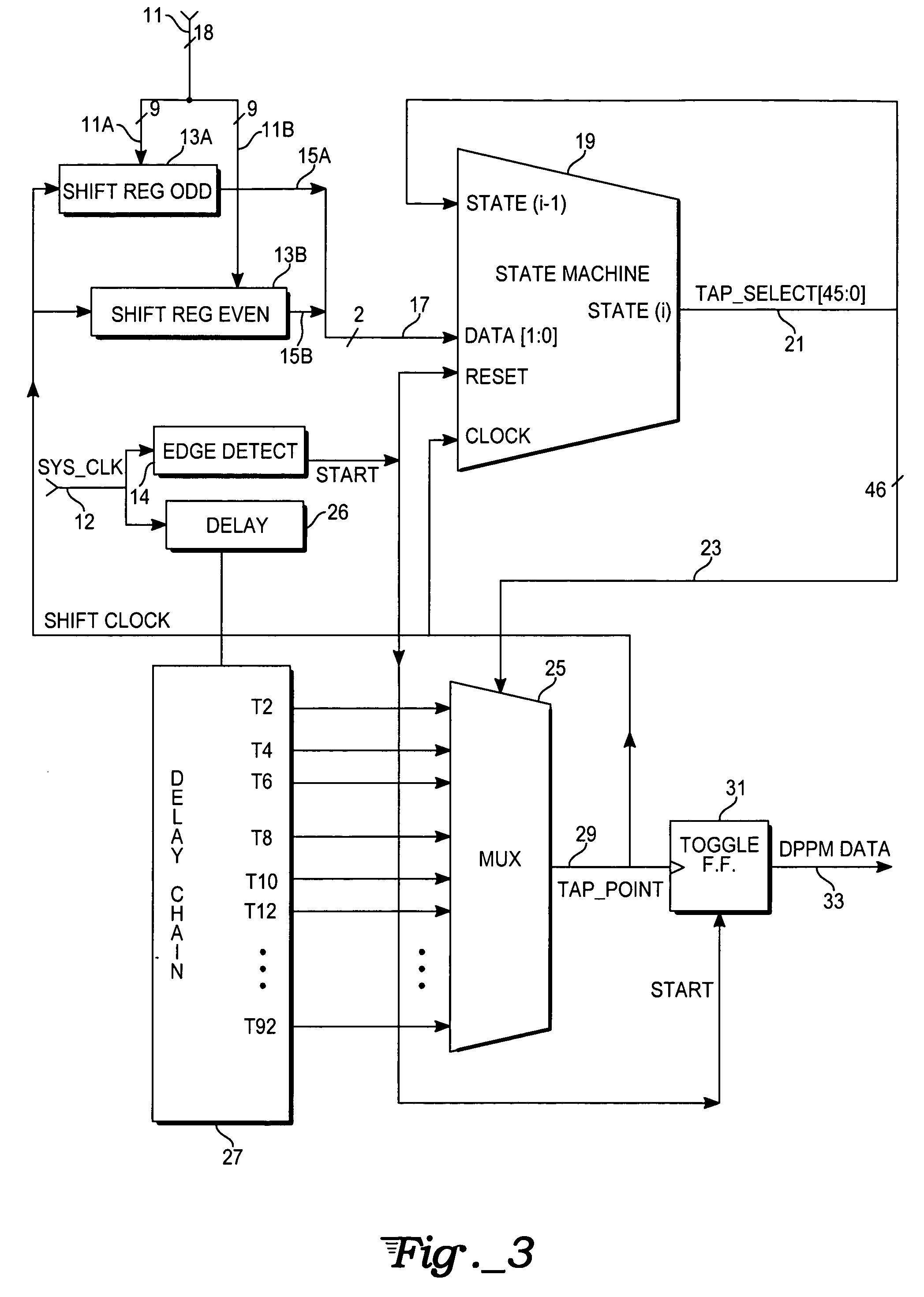Dual phase pulse modulation encoder circuit
a technology of encoder circuit and encoder, which is applied in the field of modulation of digital data, can solve the problems of power consumption requirements, potential signal propagation error recovery and the recovery of original information
- Summary
- Abstract
- Description
- Claims
- Application Information
AI Technical Summary
Problems solved by technology
Method used
Image
Examples
Embodiment Construction
The present invention is an encoder circuit (an embodiment of which is shown in FIG. 3) that carries out dual phase pulse modulation (DPPM). DPPM is a method of encoding data, resident in digital circuitry in the form of binary circuit states (ones and zeros), as a string of alternating high and low signal pulses whose respective durations or widths represent 2 (or more) bits of data per pulse. An exemplary embodiment shown in FIG. 1 uses 2 bits for encoding. The pairs of bits are encoded using a set of distinct pulse widths representing each possible dibit symbol value, such as: 00=4 ns pulse 01=6 ns pulse 10=8 ns pulse 11=10 ns pulse
The choice of 4, 6, 8, and 10 ns pulse widths is arbitrary and could just as well have been 4, 5, 6, and 7 ns or some other pulse widths, provided the decoding circuitry at the receiving end of a DPPM signal transmission can correctly distinguish the different pulse widths from each other. The decoding circuitry (as well as process variation, no...
PUM
 Login to View More
Login to View More Abstract
Description
Claims
Application Information
 Login to View More
Login to View More - R&D
- Intellectual Property
- Life Sciences
- Materials
- Tech Scout
- Unparalleled Data Quality
- Higher Quality Content
- 60% Fewer Hallucinations
Browse by: Latest US Patents, China's latest patents, Technical Efficacy Thesaurus, Application Domain, Technology Topic, Popular Technical Reports.
© 2025 PatSnap. All rights reserved.Legal|Privacy policy|Modern Slavery Act Transparency Statement|Sitemap|About US| Contact US: help@patsnap.com



